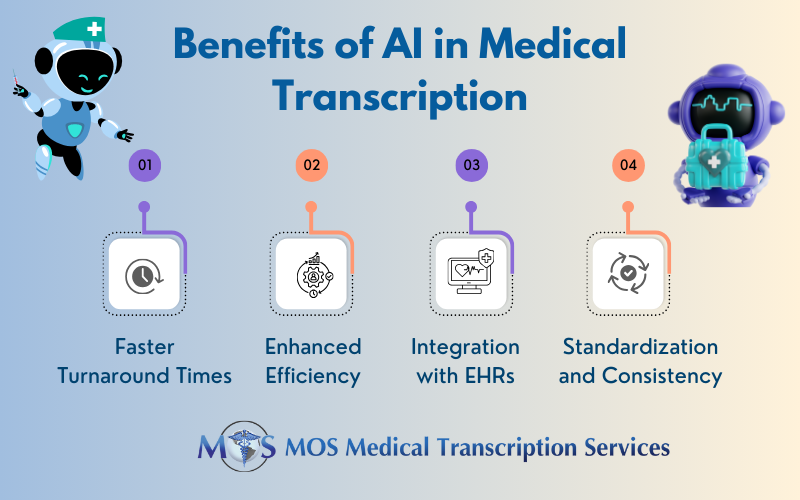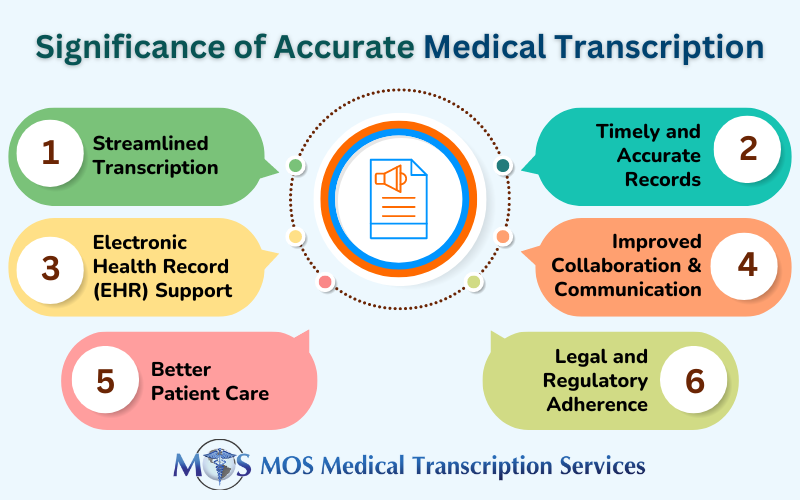
Table of Contents
Given the importance of clinical documentation and record keeping in providing optimal patient care, it is an essential component of practice management. It becomes a serious issue, though, when you have to devote too much of your valuable time to keeping track of your patients’ medical information. Dentists also fit this description. Due to their hectic schedule, dentists may not be able to keep patient records properly updated. Any mistake in dental transcribing could compromise the document’s trustworthiness. To maintain accuracy and guarantee that the records are error-free, dental records documentation can be outsourced to a trustworthy dentistry medical transcription service.
Advantages of Using Medical Transcription in Dentistry
- The patient record can be used by nursing and other support personnel as a manual for patient care, including warning indications that need to be investigated.
- Dental staff, nurses, hospital administrators, and others can devote the majority of their time to caring for patients while doing other tasks effectively in the background. Dental professionals can benefit from outsourcing dental transcription if they are tired of spending countless hours in front of a computer screen tracking reports or patient charts. For instance, if you use periodontics transcription services, you can capture medical notes, reports, and other important information using audio dictation.
- Another significant advantage of employing a medical transcription provider is the time and money savings ensured. With the aid of a smartphone app, a nurse or other healthcare worker simply needs to capture voice notes to be immediately prepared to switch to other work.
- Billing and coding staff might use medical records that are prepared systematically to simplify insurance settlement. Accurate transcription is necessary to speed up the payment of insurance claims, whether it be periodontics transcription or any other dental transcription services.
- Legal requirements in some situations make keeping medical records vital. In the event of legal disputes, these records can be an invaluable asset. It becomes simple to accomplish so with the help of medical transcribing services.
Through the dental record, dentists can communicate with patients and other healthcare professionals who could be involved in overseeing the patient’s treatment. Providers who are unfamiliar with the patient can learn about their dental history and experiences from the complete and correct records.
Consider Some of the Following Steps to Document Dental Records
- Every setting in a dental practice should follow the same charting procedures, and the dentist is always responsible for making sure the charts are accurate. For chart entries, take into account the SOAP (Subjective, Objective, Assessment, and Plan) method for better clarity and transparency.
- Always be careful about what information you are entering in the dental record, especially if the remarks are complex. A court of law might read your notes aloud, so keep that in mind. Make sure they accurately depict the events that occurred. Therefore, a good rule of thumb is to first outline what you intend to write in the record before entering the information in a systematic way into the patient record.
- Ideally, documentation should be done either while the patient is still in the office or as soon as possible after they depart.
- Each entry in the dental record needs to be legibly written and assigned to a specific person. Even if there is just one dentist entering data into the treatment record, it should be done properly. Most practice management software systems automatically assign the initials of the notation maker. The paper record must be signed/initialed by the team member who made the entry. Irrespective of the format, every entry in the patient’s file needs to be approved by the dentist.
- Don’t forget to attach any necessary documentation, such as radiography and informed consent or informed refusal forms. These attachments give the dentist a tool to assess both the immediate and long-term consequences of the treatment given as well as the implications of any aggravating circumstances. The patient’s response and cooperation may also be recalled.
- When making changes or additions to earlier records’ notes, be cautious, especially if your software system is about to update or close records.
- Attempt to complete treatment notes within 24 hours so that you can answer if you are questioned about the timeliness of any changes to a patient’s record, that the modifications were made “that day” or “on the same day.
- The date and time when the delayed entry was added to the chart should be included, together with any adjustments to earlier entries. When confronted with a dental malpractice claim, a board investigation, or a patient complaint regarding the efficacy of your care, never change the record.
To convert dental records into the required format, dentists can get in touch with a reputable medical transcription service. They provide various transcription services, including pathology, orthopedic, and psychiatry transcription, among other medical specialty transcription.


